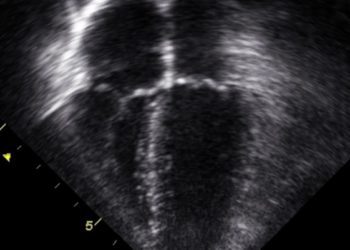New York Heart Association classification may be an incomplete predictor of adverse cardiovascular outcomes
1. In this secondary analysis of the PARADIGM-HF trial, the association between the New York Heart Association (NYHA) classification and cardiovascular outcomes was ambiguous among 8326 patients.
2. While higher NYHA classification was associated with worse prognosis, NYHA Class I patients with high natriuretic peptides presented higher event rates than patients with low natriuretic peptides from any NYHA class.
Evidence Rating Level: 2 (Good)
Study Rundown: The New York Heart Association (NYHA) classification has widely been accepted as a measure of functional capacity to describe patients with heart failure (HF). Despite the importance of NYHA classification in HF treatment and management, this system is subject to various limitations, such as poor correlation with cardiopulmonary exercise tests. This secondary analysis of the PARADIGM-HF trial sought to assess the association between NYHA class and objective markers of HF, such as N-terminal pro-B-type natriuretic peptide (NT-proBNP) and long-term prognosis. Included patients were all NYHA class II or higher at baseline and were treated with sacubitril-valsartan before randomization. The main exposure was NYHA class at randomization after 6 to 10 weeks of the run-in period. Primary outcomes included cardiovascular (CV) death or first HF hospitalization. A total of 8326 patients with known NYHA classification were included in this study. Of 389 patients in NYHA class I, 58% changed functional class during the first year after randomization. The level of NT-proBNP was found to be a poor discriminator of NYHA classification. Patients classified as NYHA III displayed a distinctively higher rate of CV events, and patients in NYHA class I and II revealed lower event rates. Patients in NYHA class I and II overlapped substantially in NT-proBNP and long-term prognosis. A strength of this study was its large sample size. A limitation is that the subset of NYHA class I patients included in this secondary analysis may not be representative of all NYHA class I patients.
Click to read the study in JAMA Cardiology
Relevant Reading: Implications of the New York Heart Association classification
In-Depth [randomized controlled trial]: This study assessed the patient variation in NYHA classification and analyzed the association between NYHA class, NT-proBNP, and long-term prognosis in the multi-center, double-blind PARADIGM-HF trial. A total of 8326 patients with known NYHA classification at randomization were included. All patients in the PARADIGM-HF trial were NYHA class II or higher at baseline and were treated with sacubitril-valsartan during a 6 to 10-week run-in period. The primary outcomes were CV death or first HF hospitalization. Of the 389 patients in NYHA class I, 228 (58%) changed functional class during the first year after randomization. Additionally, the level of NT-proBNP was found to be a poor discriminator of NYHA class. For NYHA class I vs II, the AUC was 0.51 (95% CI, 0.48-0.54). Patients classified as NYHA I and II revealed lower event rates (NYHA II vs I, HR 1.24; 95% CI, 0.97 – 1.58). Patients classified as NYHA III demonstrated a distinctively higher rate of CV events (NYHA III vs I, hazard ratio [HR], 1.84; 95% CI, 1.44 – 2.37; NYHA III vs II, HR, 1.49; 95% CI, 1.35 – 1.64). Upon stratification by NT-proBNP levels, subgroups with distinctive risk were identified, such that NYHA class I patients with a higher NT-proBNP level (n=175) had a numerically higher event rate than patients presenting with low NT-proBNP levels from any NYHA class (vs class I, HR, 3.43; 95% CI, 2.03 – 5.87; vs class II, HR, 2.12; 95% CI, 1.58 – 2.86; vs class III, HR, 1.37; 95% CI, 1.00 – 1.88).
Image: PD
©2022 2 Minute Medicine, Inc. All rights reserved. No works may be reproduced without expressed written consent from 2 Minute Medicine, Inc. Inquire about licensing here. No article should be construed as medical advice and is not intended as such by the authors or by 2 Minute Medicine, Inc.







